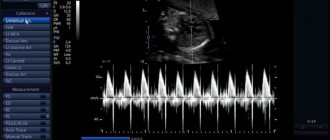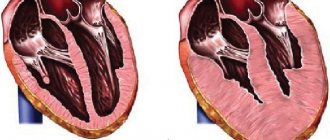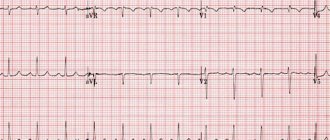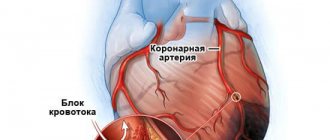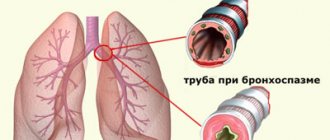Heart defects are various anomalies of the valve apparatus, septa, large vessels and individual parts of the heart, causing circulatory disorders.
There are a huge number of heart defects, each of which is dangerous to human health in its own way. Almost always, a heart defect requires surgical intervention.
1 Holter - diagnosis of heart defects
2 Diagnosis of heart defects
3 ECG for heart defects
Structural pathology of the heart can begin to develop in a person in the mother's womb - this phenomenon is called congenital heart disease . The cause is usually chromosomal abnormalities or infections suffered by the mother. From 5 to 8 babies out of a thousand are born with this defect. The defect can be detected through fetal ultrasound.
If the disease appears as a consequence of injury, infection or systemic disease, we are talking about acquired heart disease .
At its core, the defect is a collective name for diseases of different parts of the heart. Both types of heart defects have many subtypes, with varying degrees of severity and consequences for human health.
Types of heart defects
In most cases, heart defects affect the valve apparatus. Complications that arise as a result of this pathology can cause early disability and even death.
The main role of the valve apparatus is to freely pass blood through itself when the heart contracts and to delay the reverse movement of blood through the valve when relaxing, maintaining a rhythmic and continuous flow of blood. Defective valves cease to fully perform this work and function, which is why blood hardly flows through the narrowed valve into the cavity of the heart and does not fully leave the chambers or flows back through a closed valve.
Acquired heart defects:
- valve insufficiency (incomplete closure of the valves or damage to the valves) - causes reverse blood flow;
- valve stenosis (narrowing of the lumen between the open valves) - complicates blood circulation;
- prolapse (bulging) of the valve, as a result of which its leaflets bulge into the heart cavity, and often reverse blood flow occurs due to insufficient closure of the valve.
In cardiological practice, combined and associated defects are often encountered, in which several valves are affected at once.
Most often, the mitral (mitral heart disease) and aortic (aortic heart disease) heart valves suffer from abnormal changes.
Congenital heart defects:
- atrial septal defect;
- ventricular septal defect;
- patent ductus arteriosus;
- transposition (violation of position) of large great vessels;
- coarctation of the aorta;
- pulmonary stenosis, etc.
Congenital heart defects can occur either individually or in combination with each other. Thus, the combination of right ventricular hypertrophy, transposition of the aorta, ventricular septal defect and stenosis of the right ventricular outflow tract is called tetralogy of Fallot (or blue heart disease).
1 X-ray for heart defects
2 Diagnosis of heart defects using x-rays
3 Ultrasound for heart defects
Degrees
The degree of the disease is determined depending on the severity of the symptoms. In total, clinicians distinguish 4 of them:
Grade 1 – the baby’s condition is relatively stable. Cardiac activity is within normal limits. Typically, no specific treatment is required at this stage;
Stage 2 – symptoms gradually increase. Problems arise with feeding the child, and respiratory function is also impaired;
3rd degree - the clinic is supplemented by neurological manifestations, since the brain is not sufficiently supplied with blood;
4th degree – terminal. If it progresses, the patient experiences depression of respiratory and cardiac activity. It usually ends in death.
Causes of heart defects
Causes of congenital defects (CHD):
- chromosomal and genetic abnormalities;
- infections suffered during pregnancy (for example, rubella, etc.);
- maternal alcoholism and drug addiction;
- side effects of medications;
- irradiation.
Causes of acquired defects:
- infectious, rheumatic endocarditis (rheumatic heart defects, chronic rheumatic heart disease, infective endocarditis - usually insufficiency of the aortic, mitral and tricuspid valves);
- systemic connective tissue diseases;
- heart injuries;
- sepsis;
- infectious diseases (especially syphilis);
- oncology.
Risk factors for developing heart defects
- hereditary predisposition (CHD);
- complications during pregnancy (CHP);
- taking medications (toxic to the fetus) during pregnancy (CHD).
1 Laboratory diagnostics for heart defects: tests
2 VEM for heart defects
3 ECHO-kg for heart defects
Preventive actions
Preventive measures, as well as high-quality medical care for pregnant women, lead to the fact that the percentage of risk of fetal anomalies during this period is significantly reduced.
Primary preventive measures include the following:
- Proper nutrition for pregnant women, including foods rich in minerals and vitamins. Women who are pregnant should take folic acid supplements. Corn and wheat flour contains enough folic acid.
- Women should receive information about what bad habits cause abnormal fetal development and how important it is to give up alcohol, smoking and drugs if there is a history of use of these substances.
- An obstetrician who receives women for consultations monitors the patients’ weight and is attentive to patients suffering from diabetes.
- Doctors should monitor the intake of medications and warn about the effect of certain groups of drugs on the physical development of the unborn child.
- A pregnant woman who did not receive a rubella vaccine in childhood may become ill with this disease - in this case, there is a risk of having a child with congenital heart disease. Therefore, women planning to give birth to a child are vaccinated against rubella before pregnancy.
Symptoms of heart defects
The manifestations of the disease depend entirely on the severity of the lesion.
Thus, mild congenital and acquired defects in the early stages of development can occur unnoticed and have no effect on well-being. However, it should be remembered that severe congenital heart defects often affect the appearance, physical development and resistance of the body. Therefore, blueness or pallor of the skin, low height and weight, as well as a tendency to frequent colds may themselves be symptoms of the disease.
With acquired and congenital defects of moderate severity, obvious symptoms of heart failure appear (shortness of breath during exercise, swelling of the legs), dizziness, tachycardia, weakness, and fatigue.
Severe congenital (for example, blue heart disease) and acquired (valve insufficiency in combination with aortic stenosis) heart defects may be accompanied by symptoms of acute heart failure (asphyxia, pulmonary edema).
Common symptoms of heart disease:
- dyspnea;
- arrhythmia (usually tachycardia);
- cyanosis of the skin (blueness) or pallor;
- dizziness, weakness;
- swelling of the veins of the neck and head;
- decreased blood pressure;
- fainting.
1 Diagnosis of heart defects
2 Diagnosis of heart defects
3 Stress test for heart defects
Stages of development of congenital heart disease
Regardless of the type and severity, all defects go through several stages. The first stage is called adaptation. At this time, the child’s body adapts to new living conditions, adjusting the work of all organs to a slightly changed heart. Due to the fact that all systems have to work for wear and tear at this time, the development of acute heart failure and a malfunction of the entire body cannot be ruled out.
The second stage is the phase of relative compensation. The changed structures of the heart provide the child with a more or less normal existence, performing all its functions at the proper level. This stage can last for years until it leads to the failure of all body systems and the development of decompensation. The third phase of congenital heart disease in a child is called terminal and is characterized by serious changes throughout the body. The heart can no longer cope with its function. Degenerative changes in the myocardium develop, sooner or later ending in death.
Diagnosis of heart defects
After talking with the patient, collecting complaints and physical examination, the cardiologist prescribes laboratory and hardware tests.
Methods for diagnosing heart defects:
- biochemical and clinical blood tests;
- electrocardiography (ECG);
- 24-hour Holter ECG monitoring;
- Ultrasound of the heart (ECHO-CG);
- chest x-ray;
- MSCT or MRI of the heart and large vessels;
- Transesophageal ECHO-CG.
Most of the listed diagnostic methods are also used to determine indications for surgical treatment of heart defects.
Treatment of heart defects
Drug treatment for heart defects is generally not considered effective. Therefore, therapy is aimed at antibacterial treatment for acute rheumatism, eliminating the manifestations of chronic rheumatic heart disease, heart failure and other severe complications. The only correct way to treat heart defects today is surgery.
Surgical methods for treating heart defects:
- valve replacement - in case of severe valve insufficiency and severe stenosis, the defective valve is replaced with an artificial one (there are mechanical and biological prosthetic heart valves);
- implantation of several prosthetic heart valves - for combined and combined defects;
- closing the atrial/ventricular septal defect - applying a suture or patch made of artificial material;
- ligation of the patent ductus arteriosus;
- X-ray surgery, transcatheter operations on the beating heart (closure of septal defects with Amplatzer, transcatheter implantation of the aortic valve - TAVI, application of a clip to the mitral valve leaflets in case of severe mitral valve insufficiency, closure of the patent ductus arteriosus, etc.).
In our clinic you can undergo diagnosis and treatment of heart defects. Our cardiologists are also knowledgeable in the outpatient management of patients with heart defects and in the outpatient management of patients with prosthetic heart valves.
Everything necessary for high-precision diagnosis of heart defects and other diseases of the heart and blood vessels is at the disposal of the cardiology department of the MedicCity clinic. You can undergo a full examination of the heart and blood vessels - ECG, ultrasound of the heart, bicycle ergometry, 24-hour blood pressure monitoring and ECG on a 12-channel holter at a convenient time by appointment.
Our clinic staff consists of only experienced specialists with serious scientific training and many years of medical practice!





